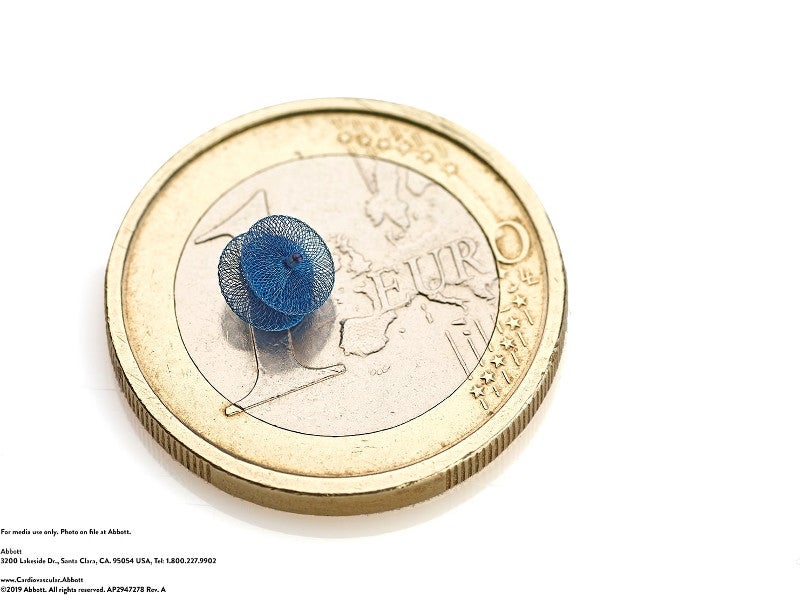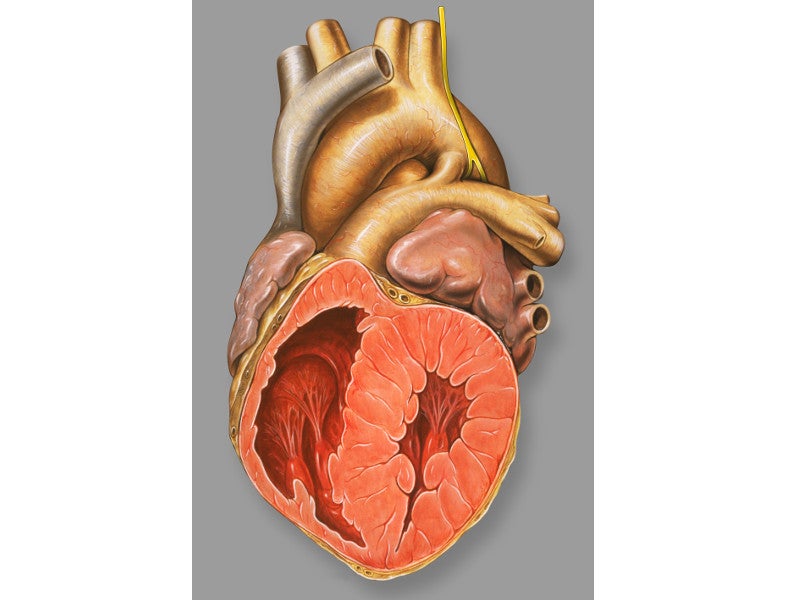Amplatzer Piccolo™ Occluder is one of the first trans-catheter treatments to be approved for the treatment of patent ductus arteriosus (PDA), a common congenital disorder that results in a life-threatening opening in the heart of premature infants and newborns.
Developed by Abbott, the device received 510(k) certification from the US Food and Drug Administration (FDA) for clinical use in January 2019.
The device was first implanted in a premature baby with PDA at the Le Bonheur Children’s Hospital in March 2019.
Amplatzer Piccolo Occluder design and features
Amplatzer Piccolo Occluder is a pea-sized, minimally invasive, self-expanding, percutaneous trans-catheter occlusion device used for non-surgical closure of PDA in patients. It is a wire mesh unit made using nitinol and interwoven polyester for remote promotion of tissue growth.
The device is deployed via an anterograde (venous) or a retrograde (arterial) approach. It features a 3mm-5mm diameter central waist and two retention discs with a diameter of 4mm-6.5mm. The length between the two retention discs ranges from 2mm to 6mm.
The central waist allows for proper positioning of the device in the ductus, while the retention discs are placed either at the ends of pulmonary and aorta of the ductus or completely inside the duct in very small infants. The discs offer secure positioning in the blood vessels and decrease embolisation.
The occluder is equipped with radiopaque marker bands at each end, which offer visibility during the fluoroscopy process. Other components of the device include a hoop dispenser, a delivery wire, an occluder protector tube, and a micro screw attachment.
Functioning mechanism of Amplatzer Piccolo Occluder
Amplatzer Piccolo Occluder is prepared by threading the occluder on the delivery wire, which is also fitted with a loader and a self-sealing haemostasis valve. It is then introduced into the patient’s body over a guidewire through a small incision made in the patient’s leg and is navigated through the blood vessels into the heart of the patient, where it seals the opening in the heart.
“PDA constitutes up to 10% of all the congenital heart disease cases.”
Amplatzer Piccolo Occluder can be easily retrieved and then redeployed for optimal placement. Fluoroscopic and echocardiographic technologies are utilised to identify the positioning of the catheter.
Clinical trials on Amplatzer Piccolo Occluder
The device was studied in a clinical trial named Amplatzer™ Duct Occluder II Additional Sizes (ADO II AS) IDE Study. It was a single-arm, open-label, multi-centre study, which enrolled 50 patients across eight centres in the US.
The primary endpoint of the study was the rate of effective closure of the ductus arteriosus at six months and the rate of major adverse events (AE) through 180 days after the device implant.
Under the trial, the device was successfully implanted in 46 patients, leading to a 92% implant success rate. The primary endpoints of the study were met, with an effective closure rate of 100% and no major complications.
Patent ductus arteriosus
PDA occurs due to the formation of an opening between two blood vessels, originating from the heart. These vessels enable transportation of oxygen-rich blood from the mother to the foetus for normal development.
The opening is automatically closed shortly after birth in most cases. In some premature babies, it fails to close on its own and causes increased blood flow to the lungs, causing breathing difficulties.
PDA constitutes up to 10% of all the congenital heart disease cases. Urgent treatment is required for the survival of babies with PDA.
Marketing commentary on Abbott
Abbott is a US-based healthcare company focused on providing products in diagnostics, medical devices, nutrition, and branded generic pharmaceuticals sectors.
The company employs 103,000 people and markets its products in more than 160 countries.






